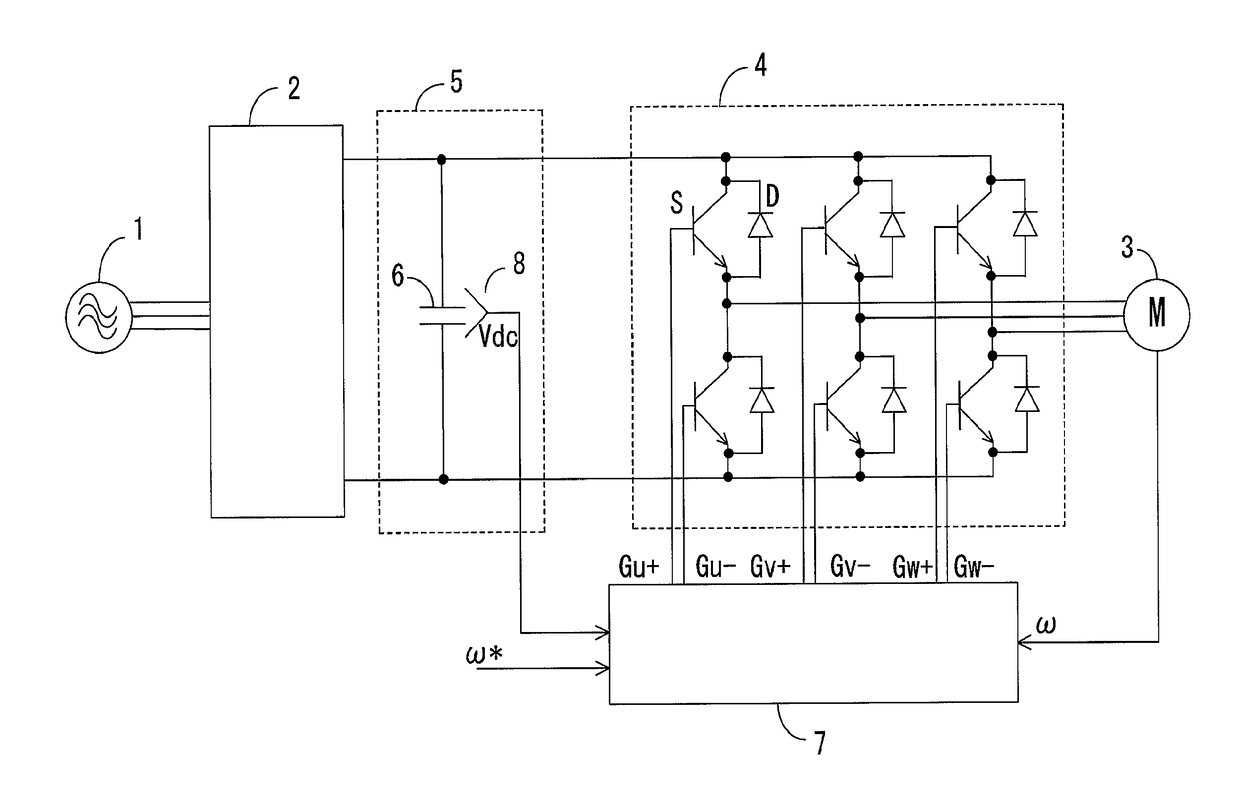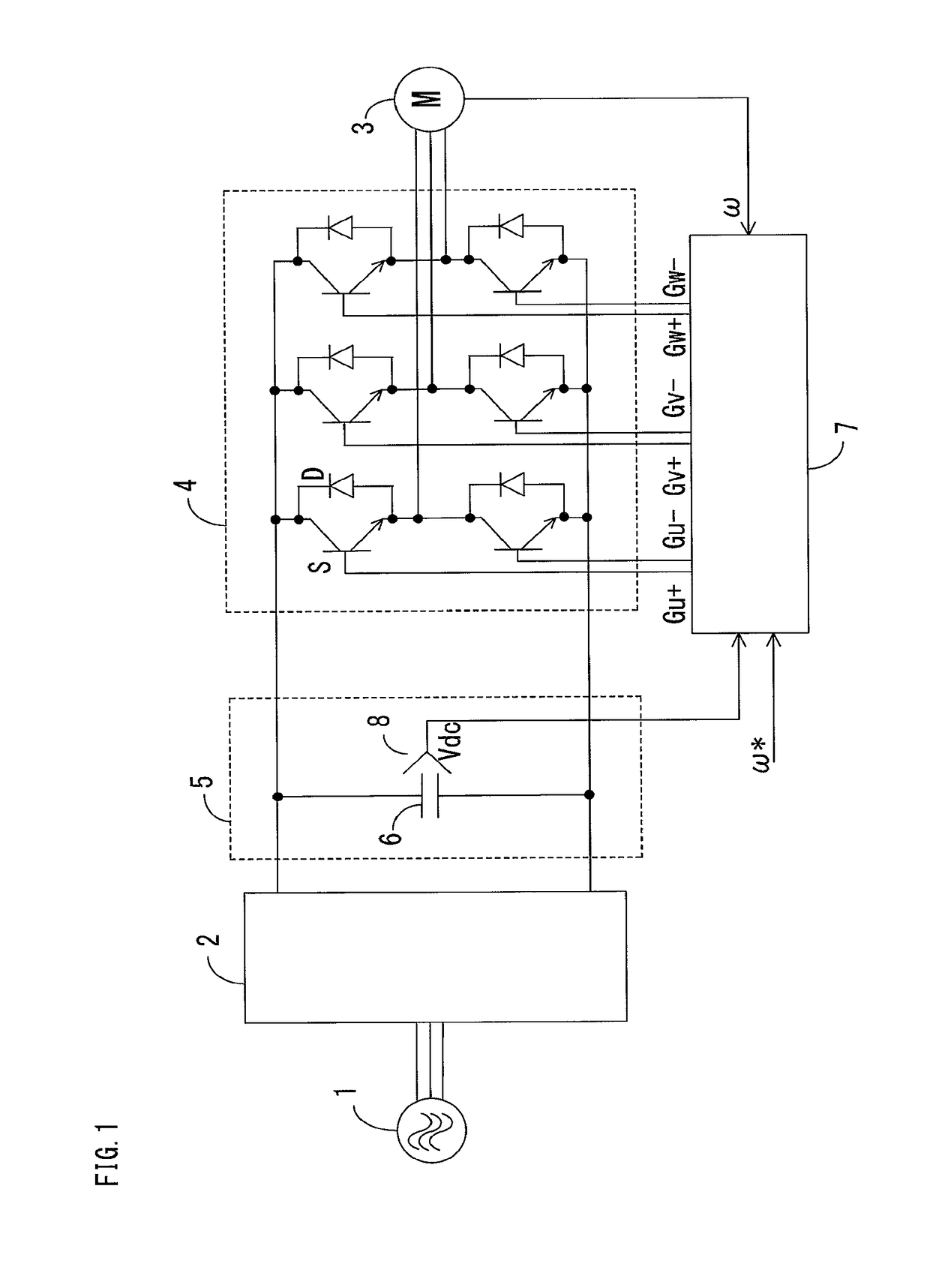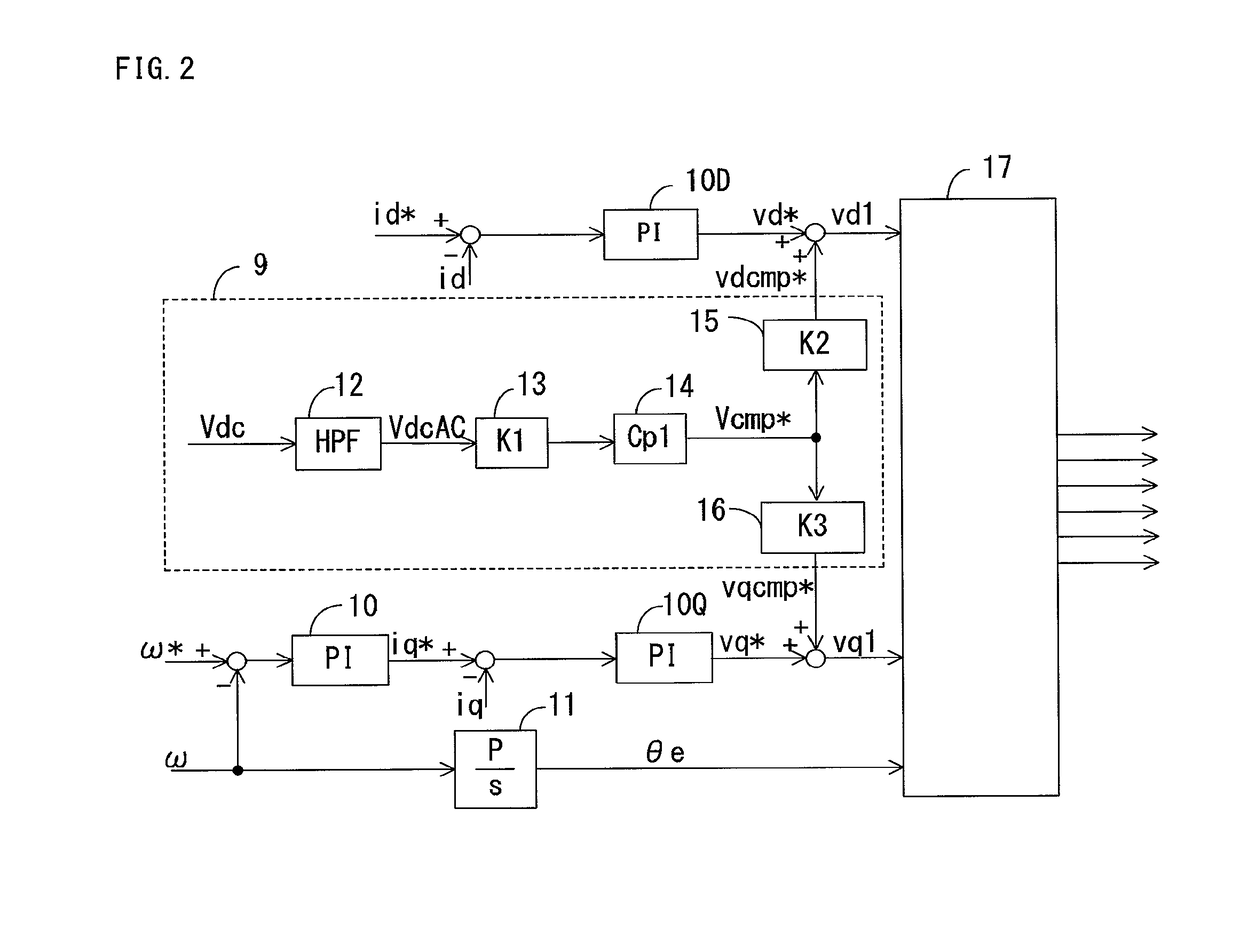Power conversion device
a power conversion device and power conversion technology, applied in the direction of dynamo-electric converter control, dynamo-electric gear control, dynamo-electric brake control, etc., can solve the problems of unstable control of ac motors, broken main circuit components, etc., and achieve the effect of reliably suppressing the occurrence of overvoltage due to lc resonance phenomenon
- Summary
- Abstract
- Description
- Claims
- Application Information
AI Technical Summary
Benefits of technology
Problems solved by technology
Method used
Image
Examples
embodiment 1
[0032]FIG. 1 is a diagram showing the entire configuration of a power conversion device according to embodiment 1 of the present invention. A main circuit of the power conversion device has a three-phase AC power supply 1, a DC link section 5 including a smoothing capacitor 6, a converter 2, and an inverter 4. The converter 2 converts three-phase AC voltage from the AC power supply 1, to DC voltage, and supplies the DC voltage to the DC link section 5. The inverter 4 converts the DC voltage of the DC link section 5 to AC voltage in a variable-voltage variable-frequency manner and supplies the AC voltage to an AC motor 3 which is an AC load.
[0033]Though the inside of the converter 2 is not shown, the converter 2 has, in general, a configuration in which diode elements are connected in a three-phase bridge form, and the inverter 4 has a configuration in which switching elements S and diode elements D connected in antiparallel thereto are connected in a three-phase bridge form.
[0034]Al...
embodiment 2
[0071]FIG. 5 is a diagram showing the internal configuration of a control unit 7 in a power conversion device according to embodiment 2 of the present invention. A difference from the case of FIG. 2 in embodiment 1 is that a resonance suppression control adjustment section 18 is provided in the resonance suppression control block 9. Hereinafter, the different part will be mainly described.
[0072]The condition in which the resonance suppression control is needed is that the resonance frequency of the LC resonance circuit coincides with a frequency six times as large as the power supply frequency, and that the output power of the inverter 4 is great.
[0073]FIG. 6 and FIG. 7 show examples of the relationship between consumed power in the AC motor 3 and oscillation of DC link voltage Vdc in the case where the resonance frequency coincides with a frequency six times as large as the power supply frequency. FIG. 6 shows the case where the consumed power is small, and FIG. 7 shows the case wh...
embodiment 3
[0090]FIG. 10 shows the internal configuration of a control unit 7 in a power conversion device according to embodiment 3 of the present invention. A difference from FIG. 2 in embodiment 1 is that the resonance suppression control block 9 performs control for correcting the d-axis current command value id* and the q-axis current command value iq* in addition to control for correcting the d-axis voltage command value vd* and the q-axis voltage command value vq*. Hereinafter, the different part will be mainly described.
[0091]There is a problem relevant to control response of the current control system having the d-axis current controller 10D and the q-axis current controller 10Q. From the perspective of the current control system, the voltage command corrected by the resonance suppression control is disturbance. If control response of the current control system is higher than the resonance frequency, operation is performed so as to cancel the voltage command corrected by the resonance...
PUM
 Login to View More
Login to View More Abstract
Description
Claims
Application Information
 Login to View More
Login to View More - R&D
- Intellectual Property
- Life Sciences
- Materials
- Tech Scout
- Unparalleled Data Quality
- Higher Quality Content
- 60% Fewer Hallucinations
Browse by: Latest US Patents, China's latest patents, Technical Efficacy Thesaurus, Application Domain, Technology Topic, Popular Technical Reports.
© 2025 PatSnap. All rights reserved.Legal|Privacy policy|Modern Slavery Act Transparency Statement|Sitemap|About US| Contact US: help@patsnap.com



